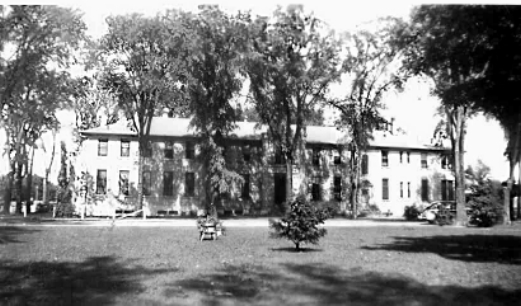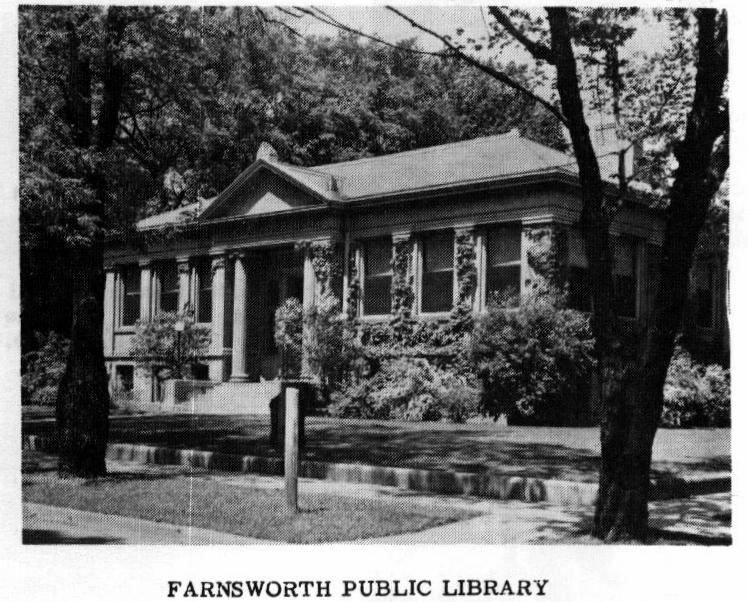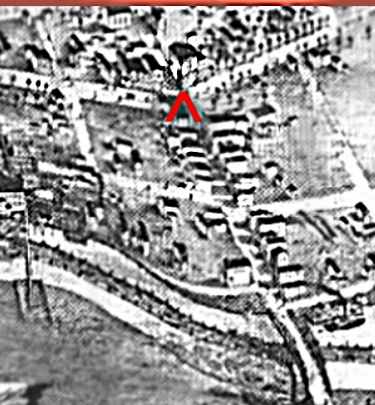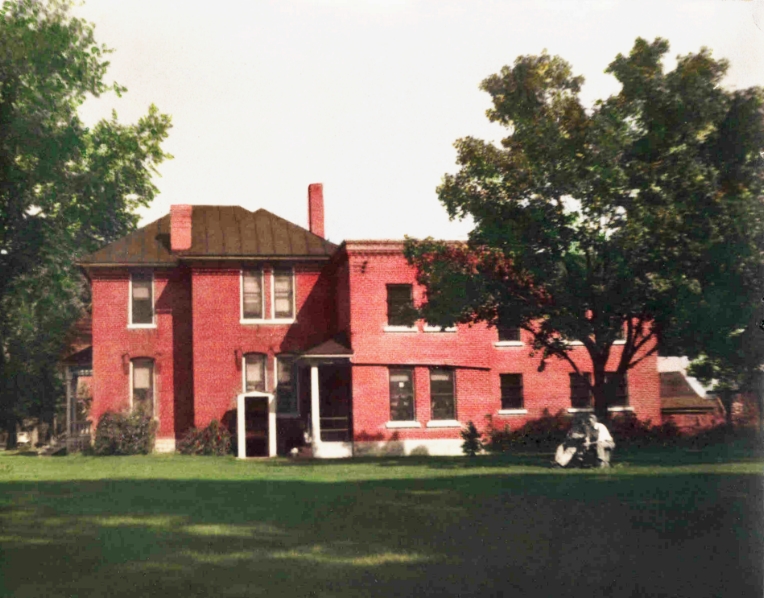
Oconto
Memorial Hospital
Before
Oconto Falls Hospital
was built, most people used the Oconto Memorial Hospital. I
was born
there. It was located across the street from the old jail.
Attached
is a photo. Contributed
by:
Bill
Fonferek
|

MENOMINEE
VILLAGE HOME
The
first settlers to what is now the city of Oconto
found a long established Menominee Indian Village with an extensive
network
of trade for the many goods and services that they skillfully provided
to other tribes. The Menominee people were highly respected among their
peers as eminently accomplished in business and travel..
|

THE
ORIGINAL OCONTO COUNTY COURT
HOUSE
Note
the slender clock tower
and the statue of "Progress" facing west on the unadorned roof line.
The
building was completed in 1891.
|

MAIN
STREET
OCONTO -
looking
West
1907
Fancy
architecture, like the dome of this building
and the adornments of the building fronts attested to the Victorian
ideal
of a successful community. City of Oconto was considered quite
attractive
among towns her size. and immigrant county families proudly sent
postcards
"home" to show off their County Seat.
|

RAILROAD
STATION
OCONTO
C:1900
Note
the stagecoach awaiting the train's arrival. Passengers
who were not met by someone with transportation could purchase rides to
nearby towns. Dray services were available for hauling orders of goods
to shops and homes. These could be as small as a set of earrings, or as
large as a two story, 4 bedroom Sears Home Building Kit, complete with
foundation blocks, instructions and all building materials, inside and
out.
|

MAIN
STREET - OCONTO
1915
Colorful,
busy and bustling,
the city of Oconto had all that a successful county seat could offer.
Shops,
business of all kinds, services and especially to those from "the
sticks"
, a tremendous eyeful of fun and excitement. The economy was now
diversified
to include not only lumbering, but all forms of agriculture and
manufacturing.
|

SUPERIOR
BRIDGE
- OCONTO
Spring
log runs were man made floods. The river, here,
is cresting during the spring log run. Water from dammed tributaries
upstream
was released to carry cut pine to the mills . This was a touchy
situation
for anyone living near the river, as rains and human miscalculations
made
for sudden and unexpected calamities. If a community bridge got in the
way, it was torn down by the deluge of floating logs, and that was just
too bad for the local folks, who had to rebuild on their own. Logging
was
KING! |

1907
OCONTO COUNTY
COURT
HOUSE FIRE
The
fire started in the clock
tower and rapidly spread along the roof destroying all but the ground
floor
and outer walls. Since the fire was of a long duration, there was
plenty
of time for residents to gather and photographers to take pictures used
on postcards. Note the ladders and fire hose.
|

GYMNASIUM,
OCONTO
Early
German city immigrants
were often involved in strenuous physical gymnastics,, culminating in
exhibitions
and competitions.
|

FARNSWORTH
LIBRARY
BUILDING
Donated
to the city by George Farnsworth, it now houses
the historical and genealogical special collections of the county
public
library. |

The
Armory, build with great pride shortly after the
Civil War ended (1865) was used to train and as a meeting and social
hall
for members of the Oconto Army Reserve. It was destroyed by city fire
that
also leveled other commercial and private buildings.
|

THE
NEW ARMORY and
CITY
HALL ANNEX
City
of Oconto
|

PARLOR
- BEYER HOME
George
Beyer made his fortune in
lumbering. He immigrated from German as a young man , with little but
his
strength, intelligence and ambition.. Working his way "up the ladder"
he
eventually owned several sizable business ventures. His home is now the
Beyer Museum, base of the Oconto County Historical Society. |

MAIN
STREET ELMS
c:1940
Like
so many
Wisconsin cities, Oconto had it's own
beautiful and majestic Elm tree "tunnels" arching over it's
streets.
These provided cooling shade in Summer, gave privacy to home along the
street, reduced road noise and helped clean the air.
These
trees
disappeared over the years, victims of
Elm Blight Disease and road improvements.
|

OCONTO
COUNTY COURT HOUSE
Restored
and with a more impressive
clock tower and roof line. "Progress" regained her perch on
top.
|

FIRST
MILL AND
DAM
These
are the
remnants of the first successful water
sawmill built, in 1844, on the Oconto River at the base of "Susie's
Hill"
by the Jones family. The first attempt to build the dam by George
Lurwick,
at the same spot in 1842, ended in failure.
|

HOLT
LUMBER COMPANY SAWDUST BURNERS
(LEFT)
The
river was dredged and
Great Lakes Windjammers and steamboats could travel directly to the
Port
of Oconto, two miles "upstream". Sawdust was used to "pave" muddy city
streets to prevent wagon wheels from digging deep into ruts. Once the
dry
summer came, much of the sawdust blew up against the foundations of
building
causing tremendous fire hazards. Eventually lumber mill waste
was
burned continually day and night on the island in the river. Residents
sat on their front porches at night watching the glowing ski around the
burners.
|

GREAT
LAKES SAILING VESSELS
Copious
amounts of waste sawdust
from the early mills were dumped into the river to wash into the lake.
Soon the river was so thickly clogged that navigation up river was
impossible
by lake boats. By 1846 when Mrs. Lindsey arrived to settle, all people,
freight, and animals had to be off loaded into Bateau canoes for the
journey
up stream to the city of Oconto. She recalled that the wet sawdust
masses
were so thick in spots that a person could walk on them. Like this
"Windjammer",
the sailing ships, which carried the milled lumber to Milwaukee and
Chicago,
had to anchor 2 miles downstream at the mouth of the Oconto River and
wait
for barges to bring the cargo to them, a time consuming and costly
waste.
|

OCONTO
HARBOR
The
"Northwest" a sidewheel steamer
out of Oconto Harbor and Green Bay, passes the steamship "Queen". She
was
owned by Captain Edwin Hart and was one of the first steamboats on the
Great Lakes, carrying both passengers and freight. The harbor at Oconto
is actually two miles up river from where the mouth empties into the
Green
Bay of Lake Michigan. Traveling outside the county took the form of
lakeboat
passage and people often went many miles across and up and down the
Great
Lakes doing business and visiting families in other states. It was
affordable,
even to those of modest income, safe, reliable and comfortable.
Delicacies
such as fresh live oysters, fish and flowers came from the eastern
cities
to Oconto every day. |

Plat
drawing
City
of Oconto
1871

AERIAL
VIEW OF
OCONTO
c:
1960
|






















